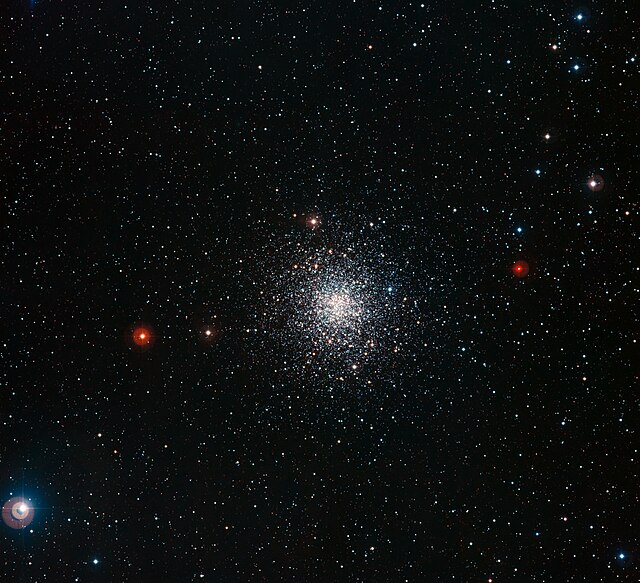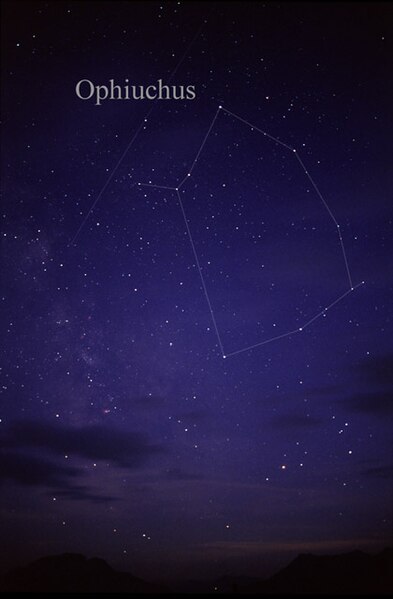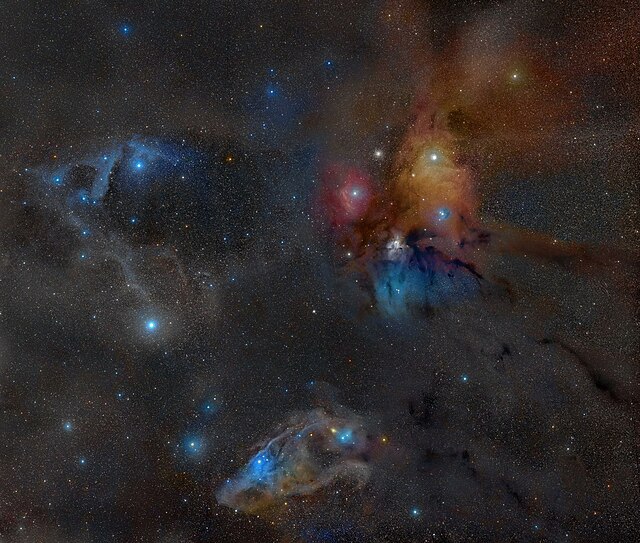Messier 107 or M107, also known as NGC 6171 or the Crucifix Cluster, is a very loose globular cluster in a very mildly southern part of the sky close to the equator in Ophiuchus, and is the last such object in the Messier Catalogue.
M107 from Hubble Space Telescope; 3.5′ view
The globular star cluster Messier 107 image taken by the Wide Field Imager (WFI) on the MPG/ESO 2.2-metre telescope.
Ophiuchus is a large constellation straddling the celestial equator. Its name comes from the Ancient Greek ὀφιοῦχος (ophioûkhos), meaning "serpent-bearer", and it is commonly represented as a man grasping a snake. The serpent is represented by the constellation Serpens. Ophiuchus was one of the 48 constellations listed by the 2nd-century astronomer Ptolemy, and it remains one of the 88 modern constellations. An old alternative name for the constellation was Serpentarius.
Rho Ophiuchi, shown with a surrounding bluish cloud slightly above a pentagon of stars in Scorpius, with the main band of the Milky Way much further to the left
The constellation Ophiuchus as it can be seen by naked eye
Infrared light view of Rho Ophiuchi molecular cloud complex from NASA
Photo from Rogelio Bernal Andreo of the Rho Ophiuchi molecular cloud complex






